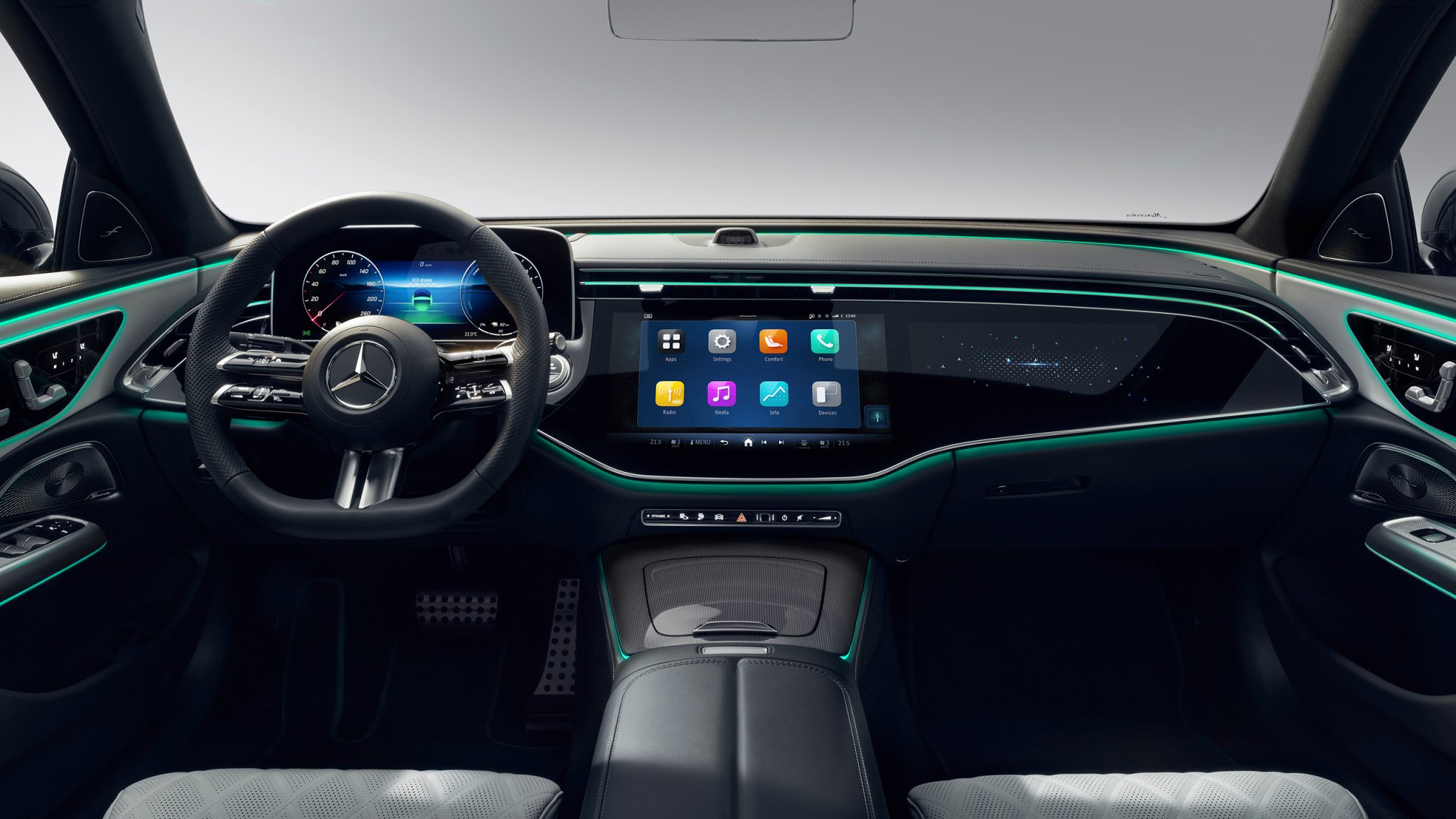

The battleground is set, and the lines couldn’t be clearer. If Mercedes-Benz and BMW have somewhat converged into one car company over the past few years in your eyes, you’re not alone. Even the way they’re talked about—the Germans—implies a justified sense of sameness from the Teutonic luxury duo.
Yet the two have very different tacks for how they’ll fight for new buyers. Coincidentally (or maybe not), BMW and Mercedes-Benz have offered looks at their next generation of infotainment systems and approaches roughly 60 days apart. Mercedes-Benz on Wednesday detailed its MB.OS infotainment system for investors; a touchscreen-dominant look with its ecosystem and architecture, customized software systems, and software-as-revenue approach. BMW’s first look at its next generation of infotainment was unveiled at CES in January; a wholesale departure from screen-heavy interiors to an emphasis on voice controls, augmented reality, and expanding head-up displays.

Put simply: Stuttgart and Munich couldn’t be further away from each other now. For pearl-clutching purists, talking touchscreens when it comes to MB and BMW amounts to blasphemy. But heady horsepower days are nearly at an end with electrification, and “C63 vs. M3” is fading in relevance—and enthusiasm, for investors and new-car buyers, touchscreens, and monetization matter more. Sorry, car folks.
At its heart, Mercedes-Benz outlined a wide-ranging plan to create, curate, and contain its infotainment software and systems within its cars inside its MB.OS. The system, which will appear in the new E-Class this year, steers toward another “walled garden” approach where Mercedes would develop specific software, including cloud-based machine learning, for its owners to purchase and subscribe to in its cars. Mercedes-Benz Chairman Ola Källenius frequently described the automaker as an architect building a framework where providers such as Google, YouTube, TikTok, and others could participate within their systems, including gaming and video streaming in the cars.

Conversely, BMW’s approach for its upcoming infotainment system in the Neue Klasse at a preview ahead of CES emphasized off-the-shelf software solutions that the automaker could enable in cars with less resources developed in-house. Or, more bluntly: BMW isn’t going to out-Apple or out-Google those software giants. “We want to build our own applications only if necessary. [BMW] is interested in off-the-shelf services,” BMW’s Senior Vice President Stephan Durach told me in Munich. “This part is not [a] traditional automaker.”
Similarly, Mercedes’ vision for the interior of its E-Class centers on screens across the dash. In contrast, BMW’s vision is displayed on the windshield, nearly forgoing a dash-mounted screen altogether “Technically, it’s possible for us to build a car now without a central touchscreen,” Durach said in December.

What’s more, Mercedes’ plans emphasize autonomy not only as an eventuality but also as a significant moneymaker for them. Up to 25% of its research and development budget is dedicated to software development they could eventually offer to owners—perhaps even other automakers. On the other hand, BMW’s “hands on the wheel, eyes on the road” signals a different path. Although the company has promised some degree of autonomy behind the wheel of its cars, it’s clear that the company would turn to other providers to help develop those self-driving systems or use turnkey software entirely.
Caveats abound, however. Although the new E-Class is due roughly at the same time BMW will deliver its new 5-Series, which is a direct competitor, the two won’t fully deliver their respective systems until closer to the end of the decade. A lot can happen between now and then. And while BMW’s vision for infotainment was delivered at CES this year, it’s unclear how it will entice investors who may be more interested in profits than a product. Mercedes’ path was outlined for investors first, meaning it was geared toward how they plan to monetize those systems rather than tempt buyers who are cross-shopping the two brands.
The two brands are clearly aiming for the same buyers but have different ideas on what constitutes a better product in the end. Perhaps the era of relative sameness from the Germans is ending.
Got a tip? Send it in to tips@thedrive.com